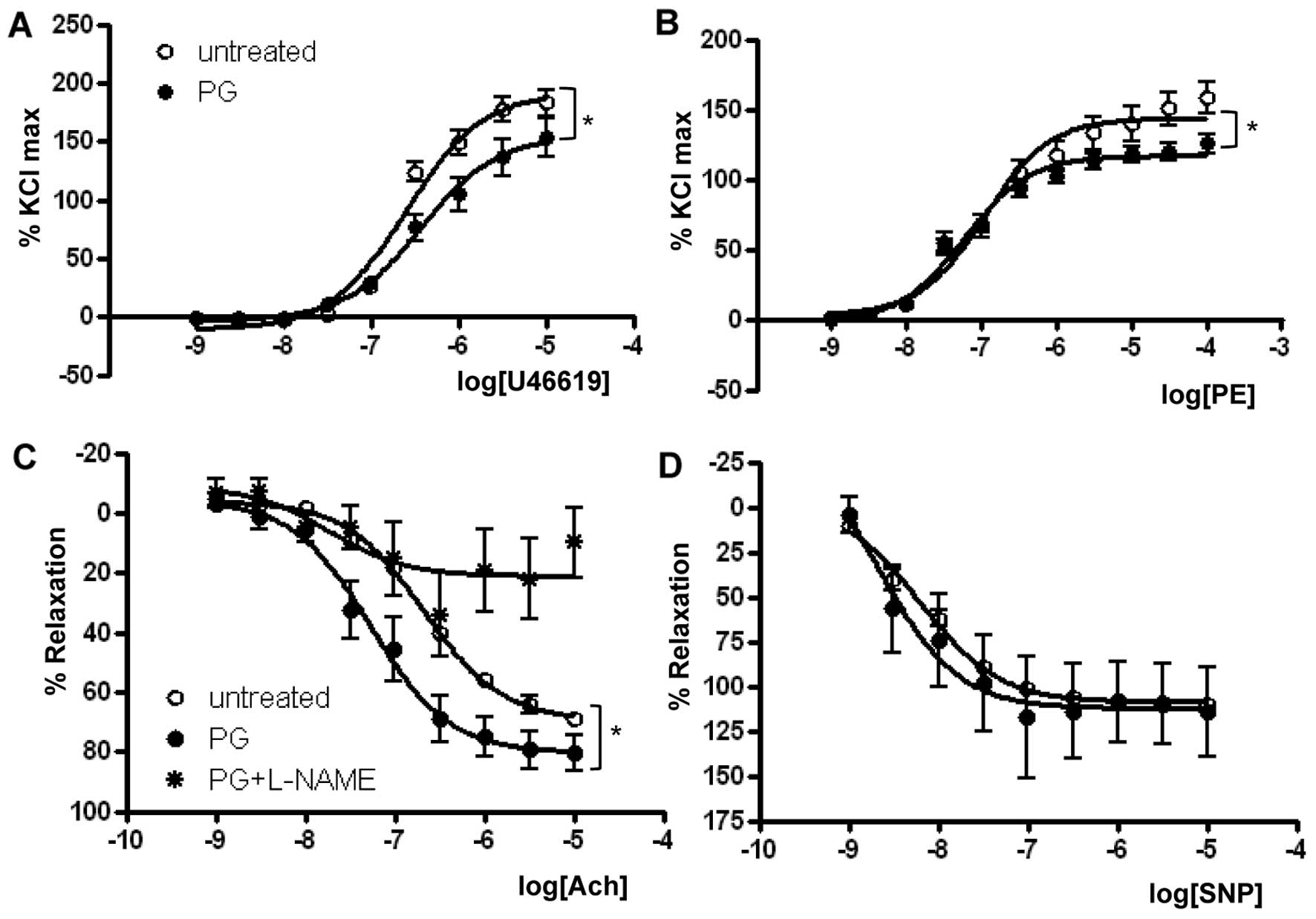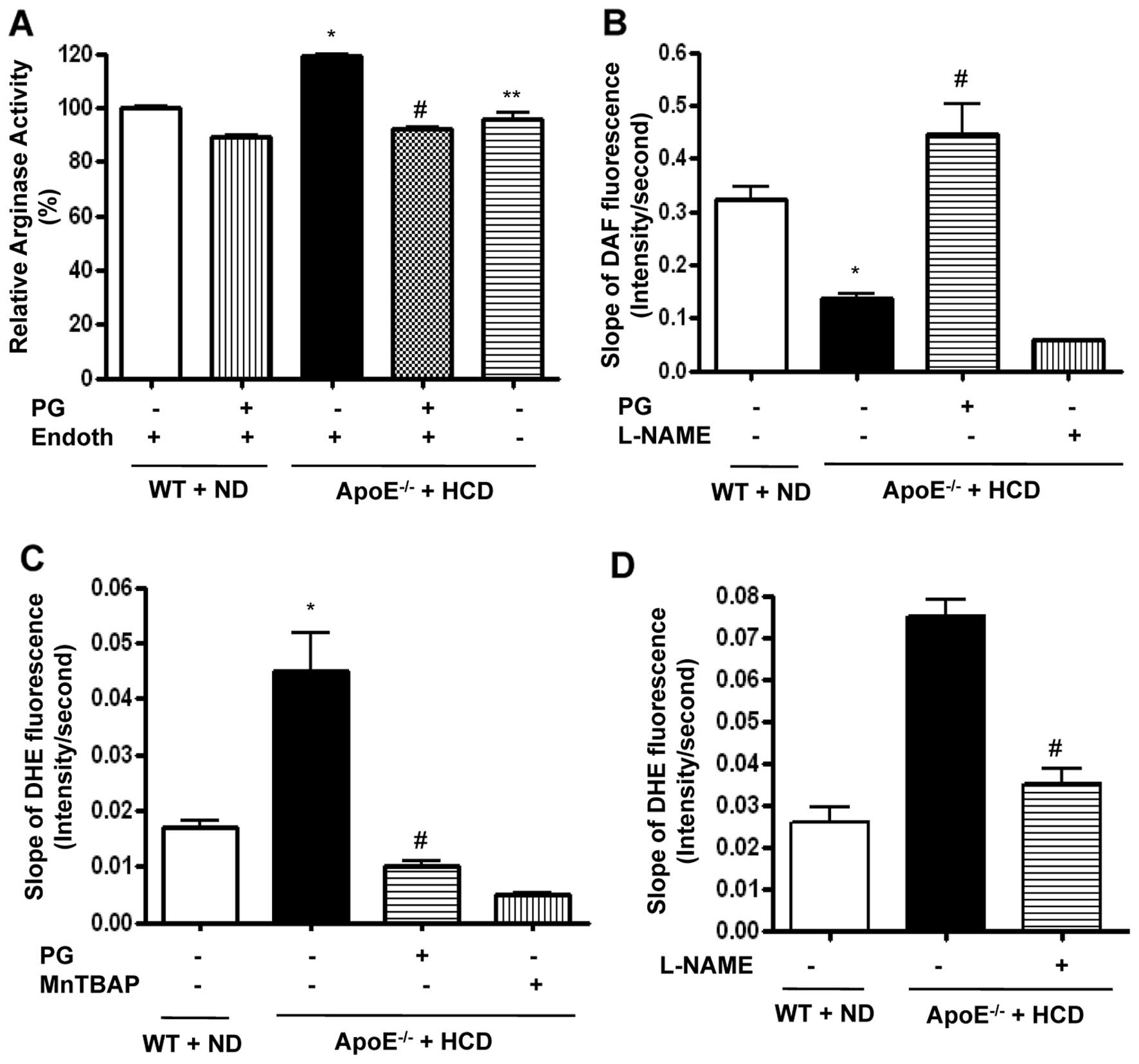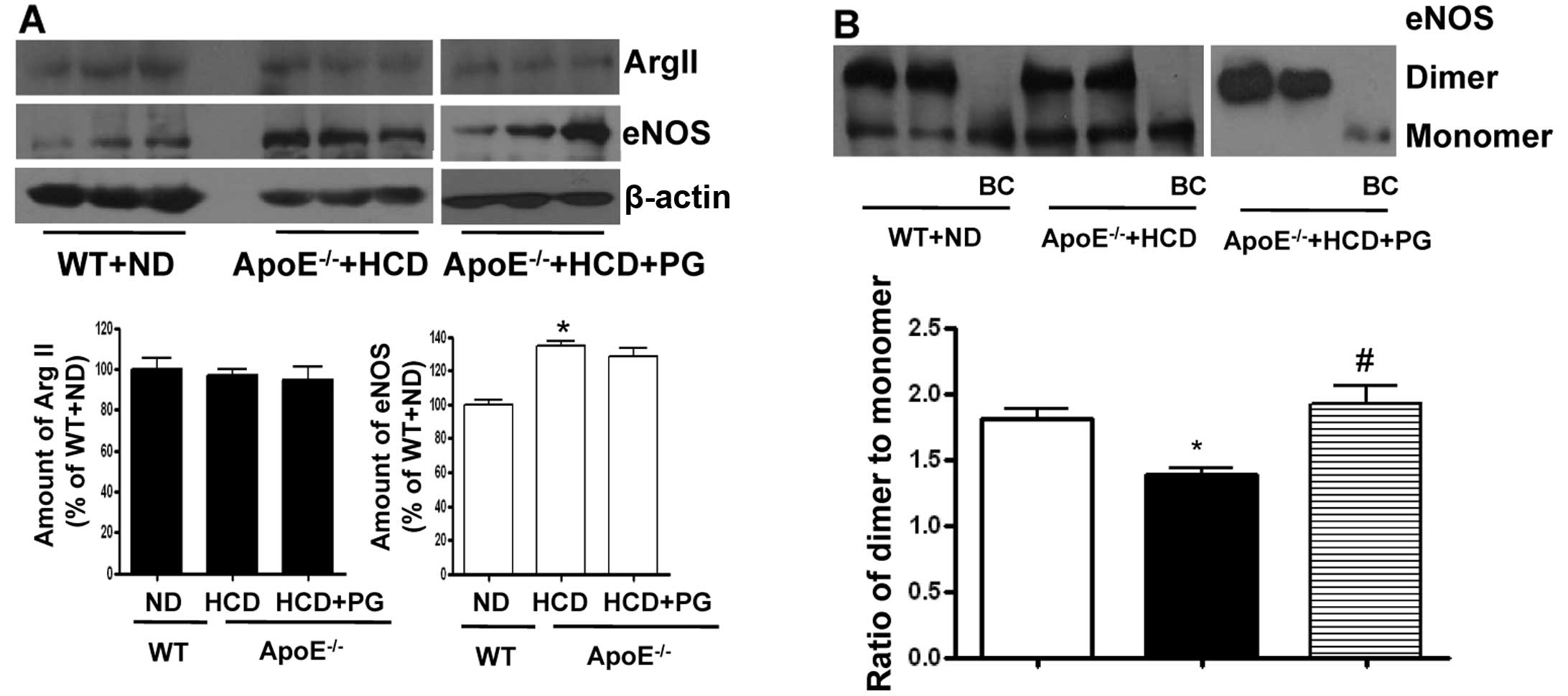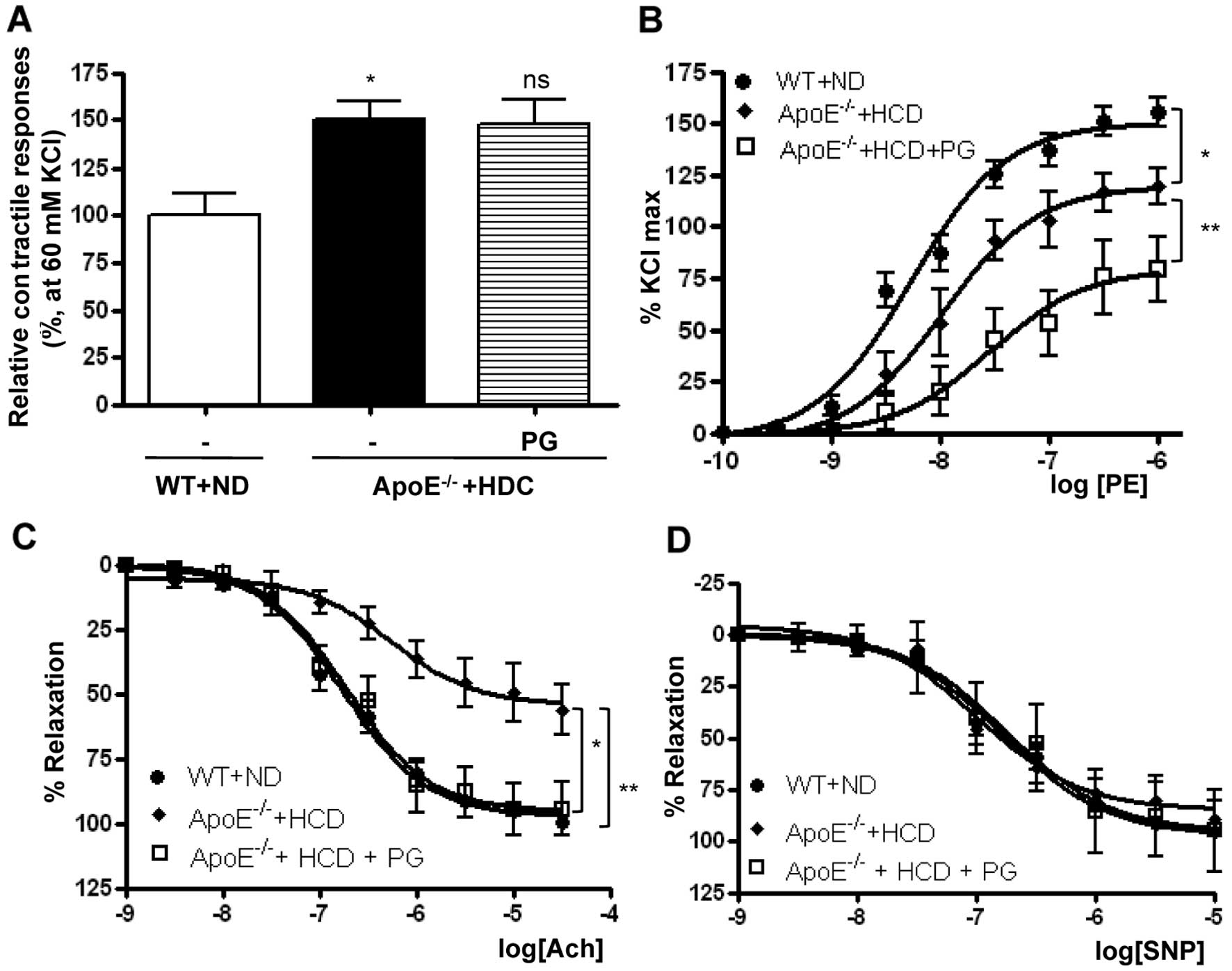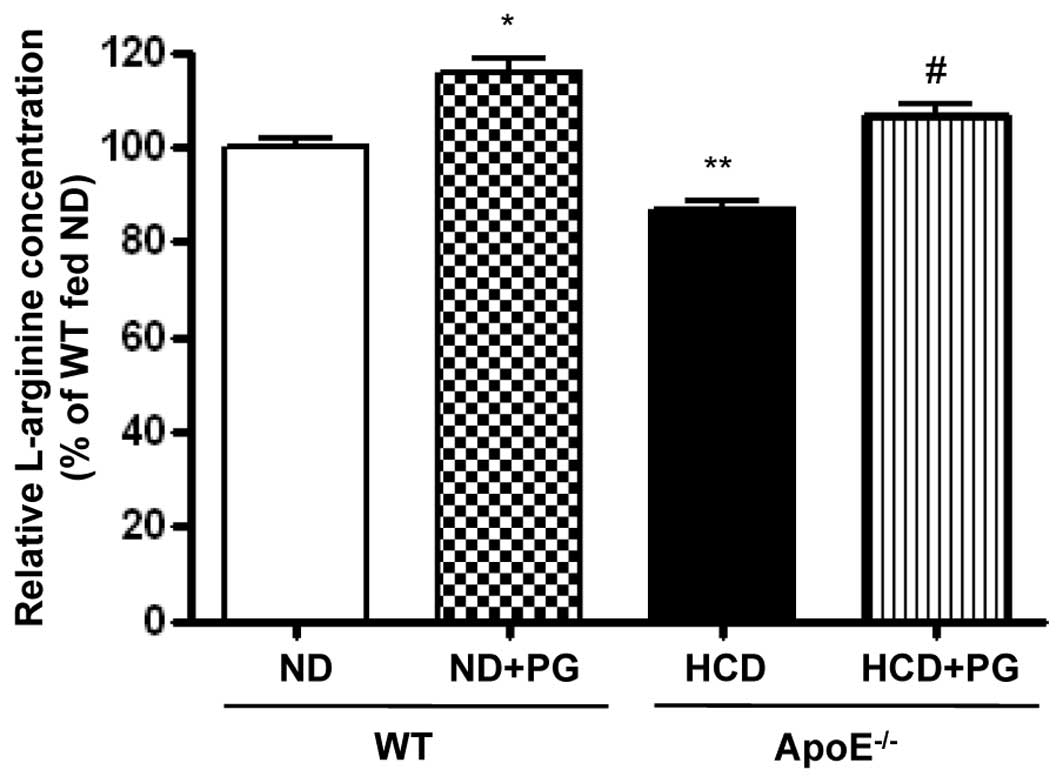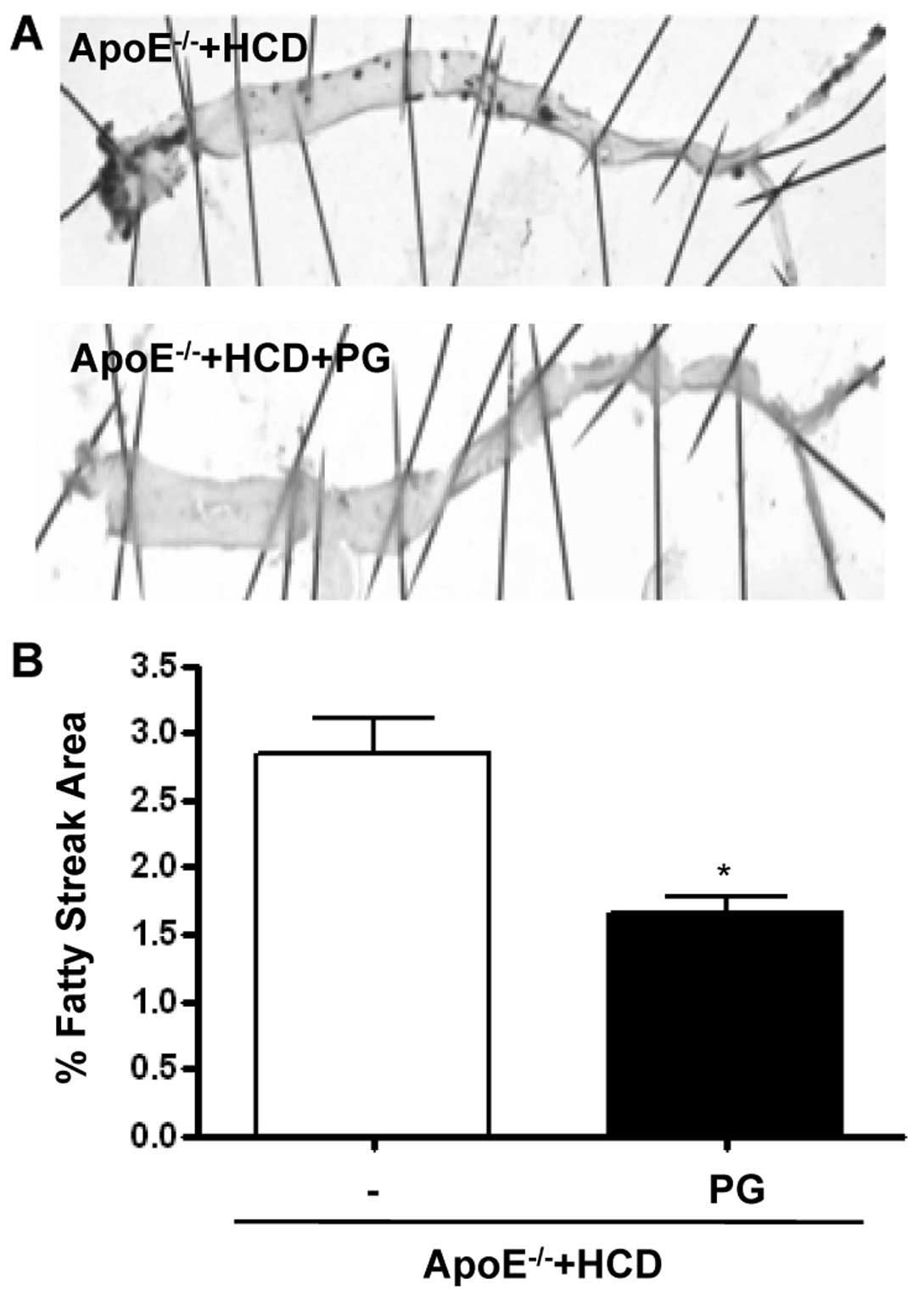|
1
|
Moncada S and Higgs A: The
L-arginine-nitric oxide pathway. N Engl J Med. 329:2002–2012. 1993.
View Article : Google Scholar : PubMed/NCBI
|
|
2
|
Ryoo S, Lemmon CA, Soucy KG, et al:
Oxidized low-density lipoprotein-dependent endothelial arginase II
activation contributes to impaired nitric oxide signaling. Circ
Res. 99:951–960. 2006. View Article : Google Scholar : PubMed/NCBI
|
|
3
|
Ryoo S, Gupta G, Benjo A, et al:
Endothelial arginase II: a novel target for the treatment of
atherosclerosis. Circ Res. 102:923–932. 2008. View Article : Google Scholar : PubMed/NCBI
|
|
4
|
Matsuda H, Morikawa T, Toguchida I, Park
JY, Harima S and Yoshikawa M: Antioxidant constituents from
rhubarb: structural requirements of stilbenes for the activity and
structures of two new anthraquinone glucosides. Bioorg Med Chem.
9:41–50. 2001. View Article : Google Scholar : PubMed/NCBI
|
|
5
|
Choi SZ, Lee SO, Jang KU, et al:
Antidiabetic stilbene and anthraquinone derivatives from Rheum
undulatum. Arch Pharm Res. 28:1027–1030. 2005. View Article : Google Scholar : PubMed/NCBI
|
|
6
|
Moon MK, Kang DG, Lee JK, Kim JS and Lee
HS: Vasodilatory and anti-inflammatory effects of the aqueous
extract of rhubarb via a NO-cGMP pathway. Life Sci. 78:1550–1557.
2006. View Article : Google Scholar : PubMed/NCBI
|
|
7
|
Ngoc TM, Minh PT, Hung TM, et al:
Lipoxygenase inhibitory constituents from rhubarb. Arch Pharm Res.
31:598–605. 2008. View Article : Google Scholar : PubMed/NCBI
|
|
8
|
Choi KH, Kim JE, Song NR, et al:
Phosphoinositide-3-kinase is a novel target of piceatannol for
inhibiting PDGF-BB-induced proliferation and migration in human
aortic smooth muscle cells. Cardiovasc Res. 85:836–844. 2010.
View Article : Google Scholar : PubMed/NCBI
|
|
9
|
Woo A, Min B and Ryoo S:
Piceatannol-3′-O-beta-D-glucopyranoside as an active component of
rhubarb activates endothelial nitric oxide synthase through
inhibition of arginase activity. Exp Mol Med. 42:524–532. 2010.
|
|
10
|
White AR, Ryoo S, Li D, et al: Knockdown
of arginase I restores NO signaling in the vasculature of old rats.
Hypertension. 47:245–251. 2006. View Article : Google Scholar : PubMed/NCBI
|
|
11
|
Boger RH, Bode-Boger SM, Mugge A, et al:
Supplementation of hypercholesterolaemic rabbits with L-arginine
reduces the vascular release of superoxide anions and restores NO
production. Atherosclerosis. 117:273–284. 1995. View Article : Google Scholar : PubMed/NCBI
|
|
12
|
Berkowitz DE, White R, Li D, et al:
Arginase reciprocally regulates nitric oxide synthase activity and
contributes to endothelial dysfunction in aging blood vessels.
Circulation. 108:2000–2006. 2003. View Article : Google Scholar : PubMed/NCBI
|
|
13
|
Santhanam L, Lim HK, Miriel V, et al:
Inducible NO synthase dependent S-nitrosylation and activation of
arginase1 contribute to age-related endothelial dysfunction. Circ
Res. 101:692–702. 2007. View Article : Google Scholar : PubMed/NCBI
|
|
14
|
Maarsingh H, Zaagsma J and Meurs H:
Arginase: a key enzyme in the pathophysiology of allergic asthma
opening novel therapeutic perspectives. Br J Pharmacol.
158:652–664. 2009. View Article : Google Scholar : PubMed/NCBI
|
|
15
|
Christianson DW: Arginase: structure,
mechanism, and physiological role in male and female sexual
arousal. Acc Chem Res. 38:191–201. 2005. View Article : Google Scholar : PubMed/NCBI
|
|
16
|
Yang Z and Ming XF: Endothelial arginase:
a new target in atherosclerosis. Curr Hypertens Rep. 8:54–59. 2006.
View Article : Google Scholar : PubMed/NCBI
|
|
17
|
Wilson AM, Harada R, Nair N,
Balasubramanian N and Cooke JP: L-arginine supplementation in
peripheral arterial disease: no benefit and possible harm.
Circulation. 116:188–195. 2007. View Article : Google Scholar : PubMed/NCBI
|
|
18
|
Walker HA, McGing E, Fisher I, et al:
Endothelium-dependent vasodilation is independent of the plasma
L-arginine/ADMA ratio in men with stable angina: lack of effect of
oral L-arginine on endothelial function, oxidative stress and
exercise performance. J Am Coll Cardiol. 38:499–505. 2001.
View Article : Google Scholar
|
|
19
|
Blum A, Hathaway L, Mincemoyer R, et al:
Oral L-arginine in patients with coronary artery disease on medical
management. Circulation. 101:2160–2164. 2000. View Article : Google Scholar : PubMed/NCBI
|
|
20
|
Ansel GM and Lumsden AB: Evolving
modalities for femoropopliteal interventions. J Endovasc Ther.
16(Suppl 2): II82–II97. 2009. View Article : Google Scholar : PubMed/NCBI
|
|
21
|
Ichinose F, Roberts JD Jr and Zapol WM:
Inhaled nitric oxide: a selective pulmonary vasodilator: current
uses and therapeutic potential. Circulation. 109:3106–3111. 2004.
View Article : Google Scholar : PubMed/NCBI
|
|
22
|
Griffiths MJ and Evans TW: Inhaled nitric
oxide therapy in adults. N Engl J Med. 353:2683–2695. 2005.
View Article : Google Scholar : PubMed/NCBI
|
|
23
|
Barbato JE, Kibbe MR and Tzeng E: The
emerging role of gene therapy in the treatment of cardiovascular
diseases. Crit Rev Clin Lab Sci. 40:499–545. 2003. View Article : Google Scholar : PubMed/NCBI
|
|
24
|
Kibbe MR and Tzeng E: Nitric oxide
synthase gene therapy in vascular pathology. Semin Perinatol.
24:51–54. 2000. View Article : Google Scholar : PubMed/NCBI
|
|
25
|
Ibengwe JK and Suzuki H: Changes in
mechanical responses of vascular smooth muscles to acetylcholine,
noradrenaline and high-potassium solution in hypercholesterolemic
rabbits. Br J Pharmacol. 87:395–402. 1986. View Article : Google Scholar : PubMed/NCBI
|
|
26
|
Arthur JF, Yin ZL, Young HM and Dusting
GJ: Induction of nitric oxide synthase in the neointima induced by
a periarterial collar in rabbits. Arterioscler Thromb Vasc Biol.
17:737–740. 1997. View Article : Google Scholar : PubMed/NCBI
|
|
27
|
Rupin A, Behr D and Verbeuren TJ:
Increased activity of guanylate cyclase in the atherosclerotic
rabbit aorta: role of non-endothelial nitric oxide synthases. Br J
Pharmacol. 119:1233–1238. 1996. View Article : Google Scholar : PubMed/NCBI
|
|
28
|
Kawashima S: The two faces of endothelial
nitric oxide synthase in the pathophysiology of atherosclerosis.
Endothelium. 11:99–107. 2004. View Article : Google Scholar : PubMed/NCBI
|
|
29
|
Ozaki M, Kawashima S, Yamashita T, et al:
Overexpression of endothelial nitric oxide synthase accelerates
atherosclerotic lesion formation in apoE-deficient mice. J Clin
Invest. 110:331–340. 2002. View Article : Google Scholar : PubMed/NCBI
|
|
30
|
Shi W, Wang X, Shih DM, Laubach VE, Navab
M and Lusis AJ: Paradoxical reduction of fatty streak formation in
mice lacking endothelial nitric oxide synthase. Circulation.
105:2078–2082. 2002. View Article : Google Scholar : PubMed/NCBI
|
|
31
|
Closs EI, Scheld JS, Sharafi M and
Forstermann U: Substrate supply for nitric-oxide synthase in
macrophages and endothelial cells: role of cationic amino acid
transporters. Mol Pharmacol. 57:68–74. 2000.PubMed/NCBI
|
|
32
|
Simon A, Plies L, Habermeier A, Martine U,
Reining M and Closs EI: Role of neutral amino acid transport and
protein breakdown for substrate supply of nitric oxide synthase in
human endothelial cells. Circ Res. 93:813–820. 2003. View Article : Google Scholar : PubMed/NCBI
|
|
33
|
Erdely A, Kepka-Lenhart D, Salmen-Muniz R,
et al: Arginase activities and global arginine bioavailability in
wild-type and ApoE-deficient mice: responses to high fat and high
cholesterol diets. PLoS One. 5:e152532010. View Article : Google Scholar : PubMed/NCBI
|



